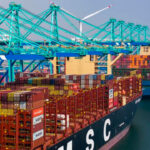The US government has grown accustomed to scapegoating other nations for its domestic problems, yet such tactics fail to address underlying structural issues. The current administration’s irrational escalation of tariff policies will ultimately harm not only its own consumers and businesses but also the global economy.
Trade is inherently a win-win endeavor rooted in competitive advantages, bringing benefits to all participants. However, the US is attempting to shift its domestic struggles onto the rest of the world by waging a trade war that affects nearly every other country.
Some US politicians have a persistent habit of deflecting blame – just as they targeted Japan in the 1980s, they now turning their fingers at China. But this blame game doesn’t solve their real problems, and protectionism runs entirely counter to the goal of “Making America Great Again.”
From an economic standpoint, the US government’s trade policies are fundamentally flawed, unreasonable and irrational. Imposing steep tariffs and forcing smaller economies to concede through coercive negotiations ignores the deeply interconnected nature of global trade, and will hurt the US itself, producing lose-lose outcomes.
If the US-provoked trade war escalates further, the worst-case scenario could resemble the global economic depression in 1930s. After the 1929 Wall Street crash, the US government raised tariffs to protect its own industries and create jobs, but that only led to a crisis that crippled international trade and to the Great Depression throughout the 1930s.
This disastrous policy would not only impose massive costs on ordinary Americans but also cripple global economic growth. The US administration should learn from history and recognize the need for trade governed by multilateral rules, not self-defeating protectionism.
Protectionism harms all parties, especially US businesses and ordinary people. US consumers will face reduced purchasing power and higher living costs, as hefty tariffs drive up prices without increasing incomes.
Amid the US-initiated trade war, the Chinese and US economies face the risk of decoupling; however, complete decoupling remains unrealistic, as the US cannot afford to sever trade and economic ties with China.
US firms remain deeply reliant on Chinese supply chains and the vast Chinese market, while US consumers also depend on affordable, cost-effective Chinese goods.
Many US companies, including Apple and the chip industry, have openly opposed additional tariffs. Ordinary consumers are increasingly turning to Chinese e-commerce platforms like Temu and Shein for cost-effective Chinese products – evidence of ongoing reliance.
Moreover, this protectionist strategy will inflict a “dual blow” on the US innovation ecosystem and high-tech sector.
On one hand, tariff hikes shelter uncompetitive domestic sectors, which, even if revived, would require long-term protection from the government due to higher domestic production costs, ultimately dragging down the US’ overall economic competitiveness.
On the other hand, the US’ competitive advantages lie in high-tech industries – sectors that require massive, sustained R&D investments. Their profitability is closely tied to market scale that their products can reach, and retaliatory measures against US tariffs by other countries would shrink the global market share for US high-tech exports.
With China’s market twice the size of America’s, losing access to it would severely damage these companies’ profitability, which in turn would diminish their R&D capabilities, and ultimately erode their technological edge.
Therefore, if the US choose to end trade with China, it would suffer greater losses. These unsustainable and unreasonable policies will eventually be rejected by the American public and the international community.
As for the impact of US tariffs on China’s economy, there is strong confidence in the nation’s ability to weather external pressures, given that its growth is primarily fueled by domestic circulation and internal demand, with consistent focus on managing its own development effectively.
China’s vast domestic market remains a key advantage, particularly amid domestic consumption upgrades where demand for high-quality, cost-effective products continues to grow. With its economic scale, advanced technology, and policy flexibility, China can reallocate production domestically while expanding into new global markets to support long-term growth.
China’s economic outlook remains positive, and by leveraging its own strengths, the country is well-positioned to achieve this year’s growth target of around 5 percent despite external challenges.
Finally, with protectionist pressures and economic volatility on the rise, affected countries should unite to reject unilateral trade protectionism and strengthen the WTO rules-based multilateral trading system.
Countries can mitigate the risks posed by protectionist tariffs by deepening trade ties through enhanced regional cooperation and expanded market access, thereby promoting economic growth through openness and shared prosperity.
Unilateralism can only isolate the US, whose economy accounts for just 15 percent of global GDP. The remaining 85 percent can forge a more stable trade network through solidarity. With confidence and solidarity, the world can overcome these challenges together.
Justin Yifu Lin is a renowned economist at Peking University and former chief economist of the World Bank. This article is compiled based on his speech at an event hosted by the China Public Diplomacy Association on Monday in Beijing.











